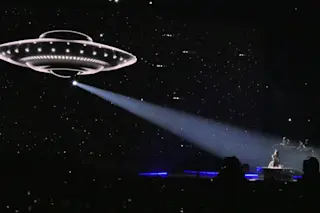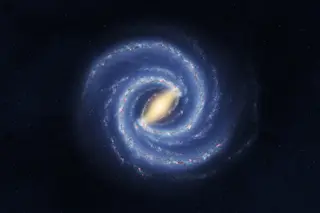A picture taken in Princeton, New Jersey, in August 1950 shows Albert Einstein standing next to the Austrian logician Kurt Gödel. Both men are looking at the camera. Einstein is wearing a rumpled shirt and baggy slacks held up by suspenders. His body sags. Gödel, dressed in a white linen suit and wearing owlish spectacles, looks lean and almost elegant, the austerity of his expression softened by an odd sensuality that plays over the lower half of his face. The men are at ease; they are indulging the photographer. Clearly, they are friends. It is hardly surprising that they should have come to know each other. They were members of the Institute for Advanced Study at Princeton, and their offices were close. As refugees from the Third Reich, they had both felt the harsh breath of history and had in common the rich, throaty German language, a world of words in which the pivot of memory turns on Goethe, not Shakespeare. Although Einstein was a physicist and Gödel a mathematician, they shared an intellectual daring that transcended their disciplines.
Gödel's incompleteness theorems, published in 1931 when he was only 25, had rewritten the ground rules of modern science much as Einstein's theory of relativity had done 15 years before. Elementary arithmetic, Gödel demonstrated, is incomplete and will remain so. Whatever axiomatic system you base your calculations on, there are true statements that lie beyond the system's reach. Adding such statements to the system as further axioms does no good. The enriched system is also incomplete, the infection moving upward by degrees.
Einstein once remarked to Oskar Morgenstern, one of the cofounders of game theory, that he went to the Institute chiefly to walk home with Gödel. ("Um das Privileg zu haben, mit Gödel zu Fuss nach Hause gehen zu dürfen." There is in the original German a note of gentle deference that cannot quite be translated.) They did so often until Einstein's death in 1955. Yet their scientific affinities grew out of profound personal differences. Einstein was a man of unshakable self-confidence. Gödel retreated before controversy and twice suffered nervous collapses; he was, under the best of circumstances, a valetudinarian, and under the worst, a hypochondriac. When the two men met, in 1933, word of young Gödel's genius had yet to leave the academic cloister, where it was conveyed in whispers. Einstein, on the other hand, was 54, nearing the end of his productive career. Although he retained a sense of impudent playfulness, he had also acquired a marmoreal aspect, transcending fame itself to become one of the century's mythic figures, his plump, sad face known throughout the world.
These differences were inevitably reflected in the nature of the friendship. In a letter written to the biographer Carl Seelig, Einstein's secretary remarked on the "awed hush" that greeted Einstein whenever he appeared at seminars or conferences. Not even the sharp-tongued Wolfgang Pauli, a fellow Nobel Prize winner in physics, could bring himself to treat the great man as if he were mortal. Gödel seemed to share something of this attitude. In letters to his mother, he appeared to take pleasure in affirming that through his friendship with Einstein, he was basking in reflected glory. "I have so far been to his house two or three times," he wrote in 1946. "I believe it rarely happens that he invites anybody to his house."
Still, in the grandeur of their scientific achievements, Einstein and Gödel both stood alone and so must have turned to each another in part because they could turn to no one else. Although the content of their conversations has been lost, we can imagine at least one topic they must have discussed on those long evening walks. In 1948 Gödel turned his attention to Einstein's supreme creation, the general theory of relativity, and succeeded in coaxing a new and flamboyant universe from the alembic of its symbols. He did so by providing an exact solution to the heart of the theory—a field equation that allows one to calculate the force of a gravitational field—and his analysis reflects the distinctive characteristics of all his work. It is original and logically coherent, the argument set out simply but with complete and convincing authority. A sense of superb taste prevails throughout. There is no show.
And it is odd. It is distinctly odd.
The leading idea of general relativity—the fusion of space and time—is not hard to grasp. After all, space and time are fused in ordinary life as well. We locate an event (the assassination of JFK, for example) both in terms of where it took place (Dallas, Texas) and when it took place (roughly 1:30 EST on the afternoon of November 22, 1963). Three numbers suffice to mark the space of Dallas, Texas, on a three-dimensional map: longitude, latitude, and altitude. The place is pinpointed as an event in space-time if another number, the time, is added. And if an event can be defined by four numbers, then a series of events can be defined by a series of such numbers, trailing one another like elephants marching trunk to tail. In general relativity such series are called world lines.
General relativity then forges a far-flung connection between the geometry of space and time and the behavior of objects in motion within space and time. Imagine a marble placed on a mattress. Given a tap, the marble will move in a straight line. But place a bowling ball on the mattress, too, and the marble, given precisely the same tap, will roll down the sagging surface, its path changing from a straight to a curved line. The bowling ball's weight deforms the medium of the mattress, and the deformed medium influences the marble's movement.
Replace the bowling ball and marble with planets, stars, or wheeling galaxies, and the mattress with space-time itself, and a homely metaphor is transformed into the leading principle of a great physical theory. In a universe with no massive objects, there is no deformation of space and time, and the shortest route between two points is a straight line. When matter makes its fateful appearance, the shortest routes will curve. The first and most celebrated confirmation of this theory came in 1919, when astronomers established that the mass of the sun causes a beam of light to curve, as Einstein had predicted.
"For us believing physicists," Einstein once wrote, "the distinction between the past, the present, and the future is only an illusion." It was a melancholy remark, made as Einstein faced death, but it flowed directly from Einstein's special theory of relativity. Imagine a group of observers scattered carelessly throughout the cosmos. Each is able to organize the events of his life into a linear order—a world line of the kind just described. Each is convinced that his life consists of a series of nows, moving moments passing from the past to the present to the future. Special relativity urges a contrary claim. The observers scattered throughout space and time are all convinced their sense of now is universal. Now is, after all, now, is it not? Apparently not. Time passes at a different rate depending on how fast a person is moving: While one hour passes on Earth, only a few seconds might pass on a rocket ship hurtling away from Earth at nearly the speed of light. It is entirely possible that one man's now might be another man's past or future.
Gödel's solution to the field equation vindicated the deepest insight of Einstein's theory, namely that time is relative. But Einstein's theory of relativity suggests only that time does not exist in the conventional sense, not that time exists in no sense whatsoever. Einstein's claim is more subtle. He suggests that change is an illusion. Things do not become, they have not been, and they will not be: They simply are. Time is like space; it is precisely like space. In traveling to Singapore, I do not bring Singapore into existence. I reach Singapore, but the city has been there all along. So, too, I reach events in the future by displacing myself in time. I do not bring them into being. And if nothing is brought into being, there is no change.













